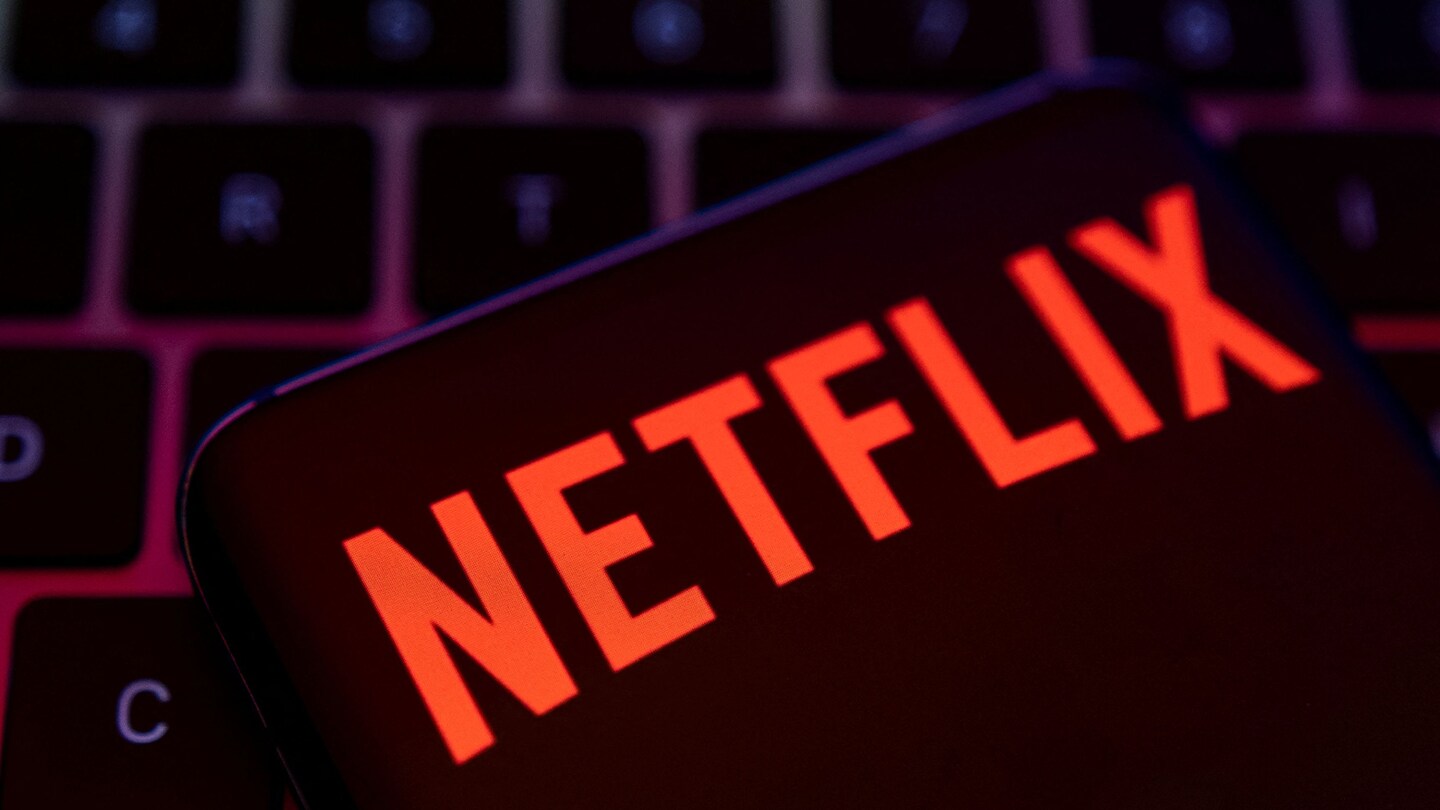Netflix shares erased more than a third of their value Wednesday, a day after the streaming service unexpectedly reported its first quarterly loss of subscribers in a decade, a sign its foothold in streaming may be crumbling.
Netflix shares tank 35% after it posts 1st subscriber loss in a decade

The streaming service lost 700,000 subscribers when it pulled out of Russia after the Ukraine invasion. But that drop-off is dovetailing with broader viewership declines as pandemic restrictions recede and consumers increasingly find other entertainment options, and now the company expects another 2 million subscribers to fall off this quarter.
“Our revenue growth has slowed considerably,” Netflix acknowledged in the first line of its letter to shareholders. The massive streaming boost from the pandemic that sent its stock soaring above $425 “obscured the picture until recently.”
On Wednesday, Wall Street’s reaction was pointed: The stock staggered 35.1 percent, closing at $226.19, for its worst single-day showing in a decade. Like many tech companies favored early in the pandemic, Netflix had already given up the much of the gains it made in 2020 and 2021 as inflation, supply chain woes, labor challenges and now fallout from the war in Ukraine weigh on performance.
The slump wiped tens of billions off Netflix’s market capitalization and drew comparisons to Meta’s historic plunge in February, which was sparked in part by flatlining user figures.
David Trainer, chief executive of investment research firm New Constructs, believes Netflix could go as low as $150 this year. He’s advising investors to cut their losses.
“Netflix was a pioneer in this space but the party is over,” Trainer said Wednesday in comments emailed to The Washington Post.
Netflix is no stranger to competition, having come up in the shadow of cable’s dominance. But in the shareholder letter, Netflix acknowledged the chunks of subscribers that have been siphoned away by an increasingly crowded pack of competitors: Amazon, YouTube, Apple TV Plus as well as bids from traditional media companies like Disney, HBO and NBC.
Although Netflix still claims the most subscribers, rival Disney claimed nearly 200 million subscribers worldwide at the end of 2021 if you include Disney Plus, ESPN and Hulu, according to Indiewire. Amazon Prime counts 200 million members on its streaming service. (Amazon founder Jeff Bezos owns The Post.)
While streaming rivals such as Disney and Paramount can monetize their content through other means, such as theme park and merchandise revenue, Netflix lacks those options. And it can “no longer rely on subscribers as its sole monetization source,” Trainer said, “a metric that Wall Street was once obsessed with.”
Americans streamed nearly 15 million years’ worth of content in 2021, according to the research firm Nielsen. And 85 percent of U.S. households subscribe to at least one streaming service, according to Kantar Group, a data analytics company, with the average home subscribing to nearly five services.
Netflix still projects revenue will grow to nearly $8 billion in the current quarter, a 10 percent increase from the same period last year. The company also retains a paying audience in excess of 220 million, more than double what it had five years ago.
But the unexpected drop in paying viewers reflects a steady slowdown in business amid increased competition and a fizzling of the pandemic-fueled growth derived from people spending more time at home.
“Netflix felt vulnerable yesterday in a way that it never has before,” according to analysts at LightShed Partners, a technology, media and telecommunications research firm.
But the company didn’t really address how its content, especially English-language content, is “simply not resonating” relative to the money Netflix is throwing at it, said Richard Greenfield, Brandon Ross and Mark Kelley in emailed comments to The Post on Wednesday. Netflix is spending $17 billion a year, more than any other player in the streaming wars.
“The need for ‘better’ content has become far more important as the level of competition has surged in the past two years,” they wrote. “Having a volume of ‘good enough’ content is no longer enough.”
To right its course, Netflix signaled plans to crack down on password sharing to turn millions of nonpaying viewers into paying ones. The company estimates that 100 million households, including more than 30 million in the United States and Canada, are sharing accounts.
“[Account sharing]’s not a new thing,” said Reed Hastings, Netflix co-chief executive, speaking to investors via video. “We’re working on how to monetize sharing,” he said. “Remember, these are 100 million households that already are choosing to view Netflix. They love the service. We just got to get paid.”
The company also is experimenting with two paid sharing features in Chile, Costa Rica and Peru that are aimed at persuading existing account sharers to start paying small sums of up to $3.
Hastings also acknowledged the robust field of streaming rivals. “We got great competition. They’ve got some very good shows and films,” he said without naming rivals or movies. “What we got to do is take it up a notch.” In its letter, Netflix listed Disney Plus as one of the “traditional entertainment companies” to realize “streaming is the future.”
Over the long run, Netflix said it sees growth coming mostly from outside the United States. It will focus on producing content that “can be made anywhere and loved everywhere,” Netflix said, pointing to non-English-language hits produced outside the United States such as South Korea’s “Squid Game” and “All of Us Are Dead” and Spain’s “Money Heist.”
The company recorded $1.6 billion in net income during the January-March period, compared with $607 million reported in the preceding quarter, but a roughly 6 percent drop from last year’s first quarter. Its revenue was nearly $7.9 billion, a 10 percent jump from the same period last year.
Other streaming companies also saw their stocks slide Wednesday. Warner Bros.-Discovery shares declined 6 percent, as did Roku’s, while Walt Disney’s shares slid 4.2 percent.






